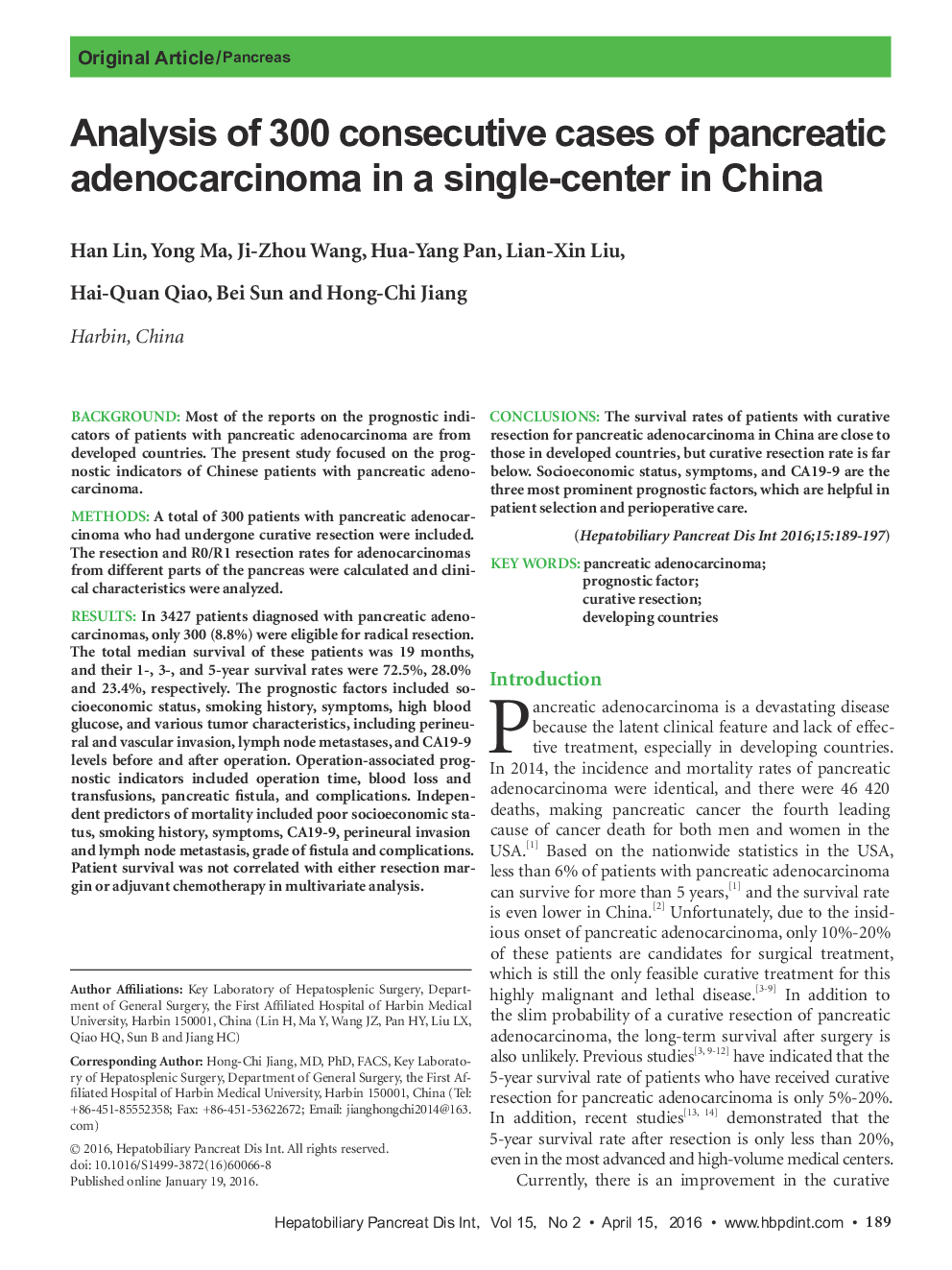| Article ID | Journal | Published Year | Pages | File Type |
|---|---|---|---|---|
| 3337178 | Hepatobiliary & Pancreatic Diseases International | 2016 | 9 Pages |
BackgroundMost of the reports on the prognostic indicators of patients with pancreatic adenocarcinoma are from developed countries. The present study focused on the prognostic indicators of Chinese patients with pancreatic adenocarcinoma.MethodsA total of 300 patients with pancreatic adenocarcinoma who had undergone curative resection were included. The resection and R0/R1 resection rates for adenocarcinomas from different parts of the pancreas were calculated and clinical characteristics were analyzed.ResultsIn 3427 patients diagnosed with pancreatic adenocarcinomas, only 300 (8.8%) were eligible for radical resection. The total median survival of these patients was 19 months, and their 1-, 3-, and 5-year survival rates were 72.5%, 28.0% and 23.4%, respectively. The prognostic factors included socioeconomic status, smoking history, symptoms, high blood glucose, and various tumor characteristics, including perineural and vascular invasion, lymph node metastases, and CA19-9 levels before and after operation. Operation-associated prognostic indicators included operation time, blood loss and transfusions, pancreatic fistula, and complications. Independent predictors of mortality included poor socioeconomic status, smoking history, symptoms, CA19-9, perineural invasion and lymph node metastasis, grade of fistula and complications. Patient survival was not correlated with either resection margin or adjuvant chemotherapy in multivariate analysis.ConclusionsThe survival rates of patients with curative resection for pancreatic adenocarcinoma in China are close to those in developed countries, but curative resection rate is far below. Socioeconomic status, symptoms, and CA19-9 are the three most prominent prognostic factors, which are helpful in patient selection and perioperative care.
